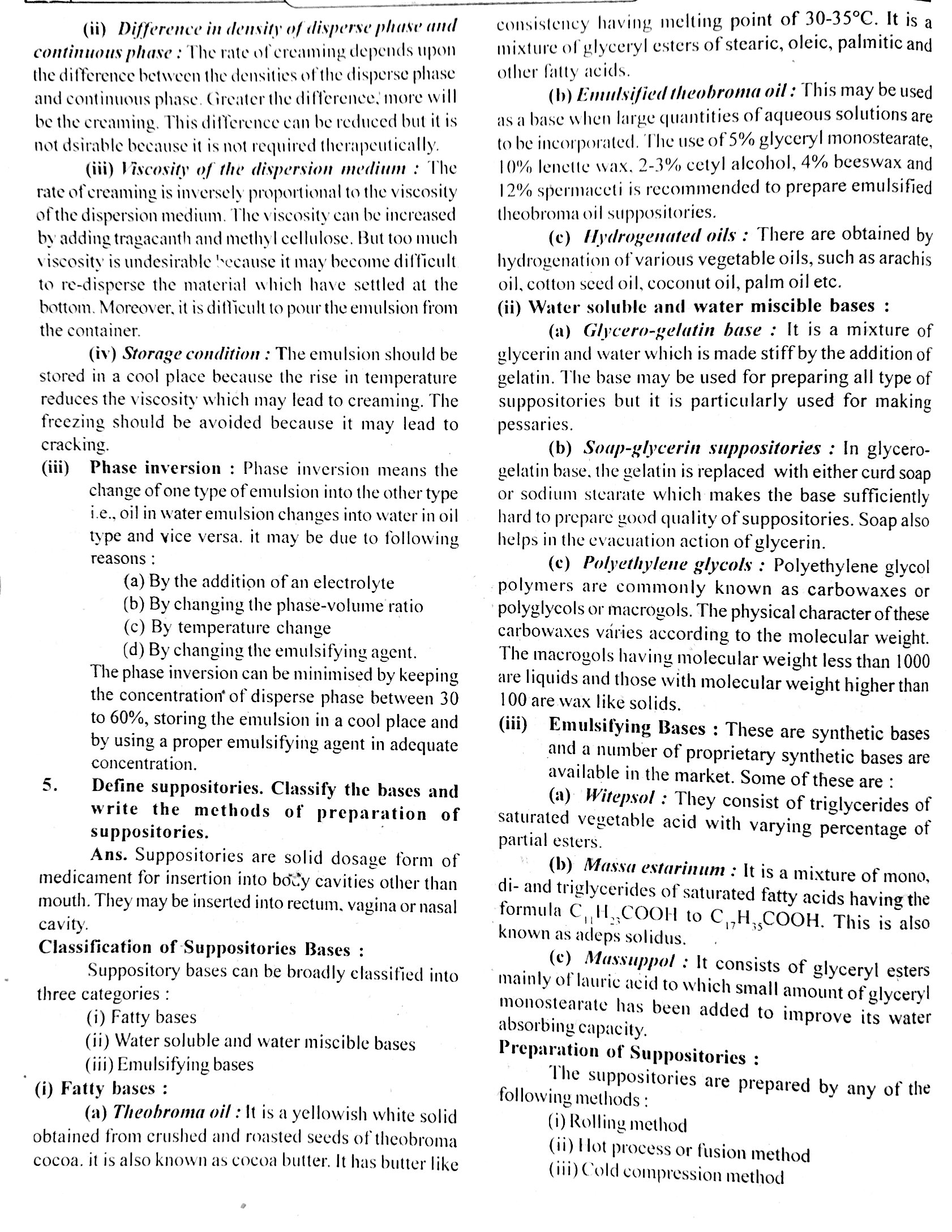ODISHA STATE BOARD OF PHARMACY
D. Pharm - II Examination - 2012 (I)
PHARMACEUTICS - II (THEORY)
Time - 3 Hours Full Marks - 80
__________________
(Answer any five questions including question no-1)
1.(A) Find out how many parts of 70%, 60%, 40% and 30% alcohol should be mixed to get 55% alcohol.
[5
(B) Define the following:
[1x5
(i) Lotion (ii) Pyrogen (iii) Draught (iv) Indiffusible solids (v) Co-solvency
(C) Fill in the blanks :
[1x6
(1) Contact lenses are usually made from ___________.
(ii) The flocculating agents reduce ___________ of the solid particles.
(iii) The rate of creaming is ________ to the radius of the globules.
(iv) Zeta potential is present in____________ suspension.
(V) Milk is the example of__________ type emulsion.
(vi) Alkaloidal salts when dispensed with_____________ preparation, the free alkaloids may be precipitated.
2. Write short notes on : (any two)
[2×8
(i) Flocculated & Non-flocculated suspension
(ii) Evaluation of parenteral preparation
(iii) Cosmetic preparation
3. (A)Define prescription. Describe various parts of a prescription.
[2+6
(B) How will you dispense the following Prescription ? Explain the Incompatibility involved and suggest methods to correct them :
SODIUM SALICULATE - 10 gm
CAFFINE CITRATE - 0.65 gm
WATER UPTO - 30 ml.
4. Define Emulsion. Discuss the factors which govern the stability of Emulsion and what are different identification tests of Emulsion ?
[2+8+6
5. Define suppositories. Classify the bases and write the methods of preparation of suppositories.
[2+6+8
6. Differentiate between :
[4x4
(i) Tablet Triturate and cachets
(ii) Cold Cream & Vanishing Cream
(iii) Simple Powder & Compound Powder
(iv) Physical Incompatibility & Therapeutic Incompatibility
7. What are parenteral preparations ? Describe various steps involved in processing of parenteral preparation. Write notes on Isotonic solution.
[2+12+2










Comments
Post a Comment